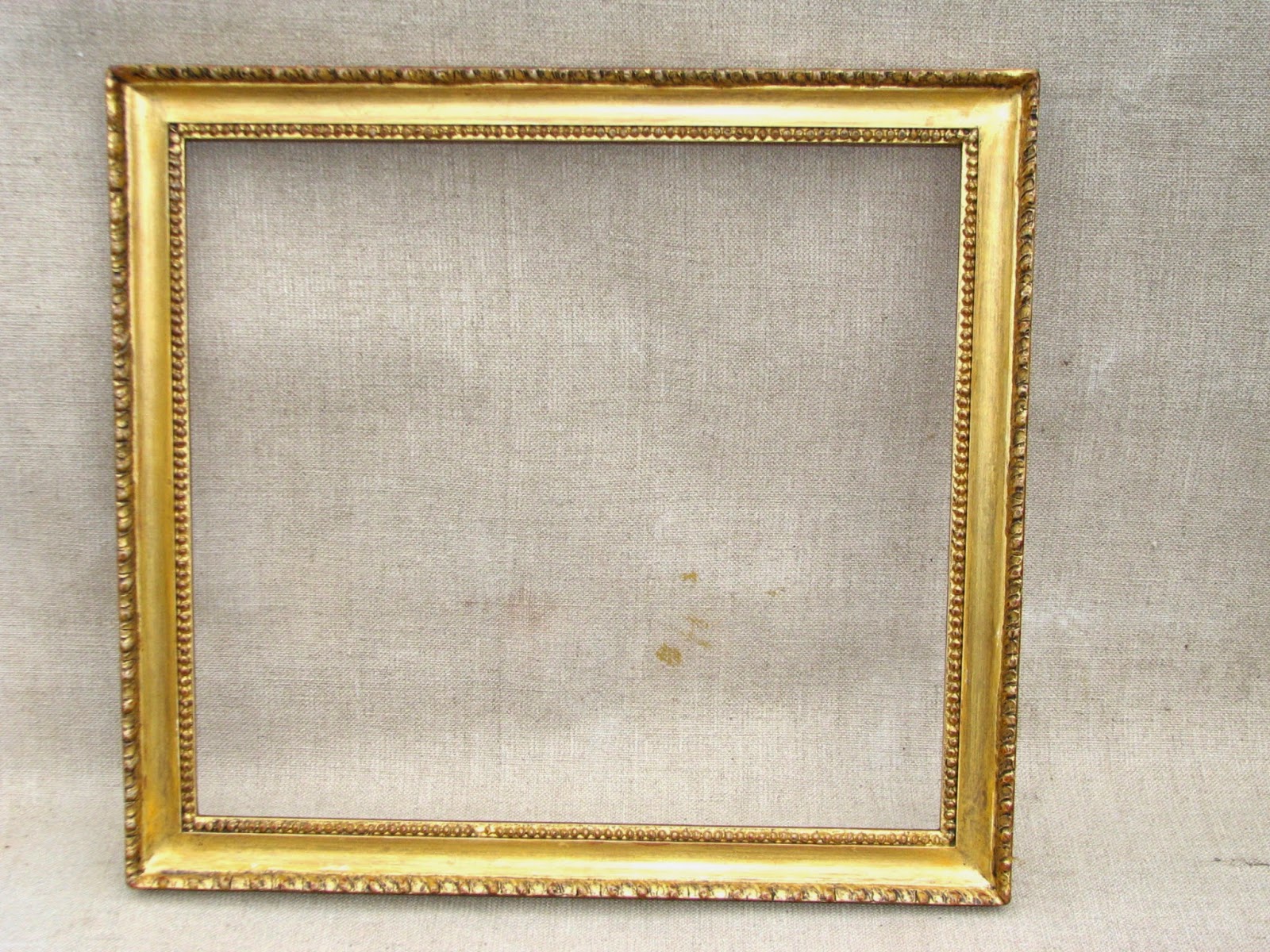The frame from the previous blog post has now been gilded, in 23.5ct loose leaf gold.
When dry, the gilding is consolidated with a thin coat of clear shellac.
Ageing the gold:
If the gilding was water laid, the gold would have been gently abraded to show the leaf overlaps and the underlying ground colours. This however is oil gilded and to use any abrasions will tend to both dull and tear the fine surface of the gilding.
For this frame I have used a series of antique glazes to create the effect below.
The antique glaze is water based and must be applied in thin coats in order to avoid puddles and streaking. Each coat must then be protected with an isolating varnish, as repeated applications of water glaze will tend to lift the previous coats.
It is the gentle abrading of the isolating varnish that creates the effect of. wear on the gilding.
A frame like this can require six to eight coats of antique glaze.
My Antique Glaze.
The challenge of trying to age gilding to the colour seen on antique picture frames in museums and galleries, is to alter the colour of the gold but not kill its luminosity.
The glaze I use has two main working elements; a mixture of dyes which rotate the colour of the gold from a pale golden yellow to a cold dirty green, with a hint of sourness.
This alone, however, leaves the gilding quite sharp and thin in appearance.
The second working element is a selection of bright pigments to fill out the colour and return the lively reflectance of good gilding.
As I said, this can only be achieved by the repeated use of thin coats of glaze but well worth the resulting effect.




No comments:
Post a Comment